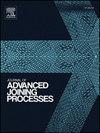Enhancing bending strength in continuous drive friction welding of PEEK polymer cylinders through the innovative progressively increased welding area method
IF 4
Q2 MATERIALS SCIENCE, MULTIDISCIPLINARY
引用次数: 0
Abstract
The continuous drive friction welding (CDFW) stands out for its low energy consumption within the welding realm. Polyetheretherketone (PEEK) represents a high-performance engineering thermoplastic, falling under the polyaryletherketone family. Renowned for its outstanding mechanical, thermal, and chemical attributes, PEEK finds utility across a diverse array of industries. However, the discovery of numerous voids at the weld interface has revealed limitations in the mechanical properties of PEEK welded samples. This study introduces an innovative approach named progressively increased welding area (PIWA) method, to mitigate voids within the weld interface. In general, the Taguchi method was used to optimize the process parameters of CDFW of dissimilar PEEK round rods to reduce random efforts by the trial-and-error method. It was found that the proposed PIWA method can definitely enhance the bending strength of rotational friction welded samples due to reduction of voids inside the weld interface. The optimal process parameters for the CDFW with the PIWA method involve a rotational speed of 2500 rpm, a cone angle of 120°, a cone top width of 8 mm, and a feed rate of 0.1 mm/s. The most influential factor affecting the bending strength of the PEEK welded samples is the feed rate, followed by cone angle, rotational speed, and cone top width. Specifically, the contribution ratios for feed rate, cone angle, rotational speed, and cone top width are about 71 %, 20 %, 7 %, and 2 %, respectively. The confirmation tests showed that the bending strength of the PEEK welded samples using optimal process parameters can be increased by approximately 68 % compared with the maximum bending strength of 180 MPa using the conventional method with a cone angle of 180° The proposed PIWA method has industrial applicability and practical value because this technique can enhance the mechanical properties of PEEK welded samples under low environmental pollution and energy consumption.
通过创新的逐步增大焊接面积方法,提高 PEEK 聚合物圆柱体连续驱动摩擦焊接的抗弯强度
连续驱动摩擦焊接(CDFW)因其低能耗而在焊接领域脱颖而出。聚醚醚酮(PEEK)是一种高性能工程热塑性塑料,属于聚芳醚酮家族。PEEK 因其出色的机械、热和化学属性而闻名,在各行各业都有应用。然而,在焊接界面上发现的大量空隙暴露了 PEEK 焊接样品机械性能的局限性。本研究介绍了一种名为 "逐步增大焊接面积 (PIWA) 法 "的创新方法,以减少焊接界面内的空隙。一般来说,采用田口方法优化异种 PEEK 圆棒 CDFW 的工艺参数,通过试错法减少随机工作。结果发现,由于减少了焊接界面内的空隙,拟议的 PIWA 方法无疑能提高旋转摩擦焊接样品的抗弯强度。采用 PIWA 方法进行 CDFW 焊接的最佳工艺参数包括:转速 2500 rpm、锥角 120°、锥顶宽度 8 mm 和进给速度 0.1 mm/s。对 PEEK 焊接样品弯曲强度影响最大的因素是进给量,其次是锥角、转速和锥顶宽度。具体来说,进给速率、锥角、旋转速度和锥顶宽度的贡献率分别约为 71%、20%、7% 和 2%。确认试验表明,采用最佳工艺参数的 PEEK 焊接样品的弯曲强度与采用传统方法(锥角为 180°)的最大弯曲强度 180 MPa 相比,可提高约 68%。
本文章由计算机程序翻译,如有差异,请以英文原文为准。
求助全文
约1分钟内获得全文
求助全文

 求助内容:
求助内容: 应助结果提醒方式:
应助结果提醒方式:


